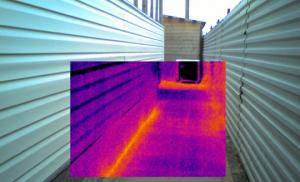Little domestic monkeys. Domestic monkeys: varieties, home care
For Russia, a monkey in an apartment is exotic. Firstly, because these animals are not representatives of the domestic fauna, and secondly, because they are wild with all the ensuing consequences.
However, despite both of these arguments, having a monkey as a pet is very, very interesting, because this animal will definitely not let you get bored. But, first of all, we advise you to become more familiar with the habits and character of monkeys suitable as a pet.
According to experts, it is better to choose from the following species: Javanese monkey and rhesus monkey. We strongly advise against buying Chinese or Ceylon macaques, because in captivity they lose their immunity, start to get sick a lot and eventually die. And the character, in truth, these monkeys leaves much to be desired. They behave restlessly, as if they are in a state of constant anxiety. The Javan macaque, like the rhesus, is quite resistant to diseases, and the temperament of representatives of both species is characterized by friendliness and poise. In addition, these monkeys behave very amusingly and are able to deliver a lot of positive emotions to their owner.
So, as you yourself have already understood, it is better to get a monkey with good immunity, which will live long and delight family members with its cute antics, or you can simply lose money (and a lot) if a monkey with a weak immune system gets sick and dies.
The pleasure of owning a Javanese monkey will cost you at least 50,000 rubles, and a maximum of 180,000. The price of a rhesus monkey on the Russian market is close to 100,000 rubles.
Now more about each:
- The Javanese macaque, otherwise called the crab-eater for crab meat, has a rather attractive appearance. He has two types of color: one is brown-yellow, the second is dark with a black muzzle. The growth of an adult does not exceed 60 cm with a weight of 4-8 kg. As you can see, the animal is compact and does not take up much space in the apartment. In addition to strong immunity, this type of monkey also has a second advantage for keeping in the house - the “Javanese” is distinguished by its unpretentiousness and quick getting used to the person (the owner and his family members). In the south of Russia, it can be kept outdoors in an aviary, and in the northern regions - in an aviary in the house. However, it would be wrong not to warn you about the rare cases where cynomolgus macaques show aggression and even bite their owner;
- Rhesus monkeys are smaller than Javanese. Becoming an adult, it weighs up to 3500 g, and is comparable in height to the fox terrier. The body of the monkey is covered with yellow-brown fur, and on its ischial part there is a growth of bright red color. Rhesus in different situations makes different sounds from a menacing growl to baby squeaking. It is better to take on the upbringing of Rhesus at a young age. So he better adapt to life in new conditions for himself. An adult animal adapts extremely difficult, therefore it regularly shows anger towards others.
The principles of raising domestic monkeys are the same as for dogs. They should be treated kindly or strictly, depending on their behavior at the moment. Both species are willing to learn, so they can be taught to perform some circus tricks that will make your children and guests at home laugh.
With good nutrition, conditions of detention and good treatment, the monkey will be imbued with confidence in you, learn to understand you and be complaisant and calm.
If you want to get a monkey, weigh the pros and cons. After reading the recommendations, tips, you will understand whether you can provide the animal with good living conditions, proper care and proper nutrition at home.
If you decide to keep a monkey at home, you should evaluate your capabilities. Macaques are wild creatures, they need certain living conditions. You need to know how to feed the animal, where to settle, how to care for it. If you can do all this, you can buy a monkey that will become a full member of the family.
First of all, you need to know what breeds of monkeys are suitable for keeping at home. It is most preferable to settle in a Javanese or Rhesus monkey. You can buy a Japanese macaque, but a Chinese or Ceylon macaque in captivity is not as resistant to diseases as Rhesus, Javanese, but it has a calmer disposition than the above breeds. But monkeys are not cheap, so it is better not to take macaques with less strong immunity.
- Price Macaque Javanese in Russia from 50-80 thousand rubles and up to 180 thousand.
- Price Macaque rhesus (Macaca mulatta) in Russia from about 90 thousand rubles.

The rhesus macaque is also called the bunder (lat. Macaca mulatta). An adult grows up to the size of a fox terrier dog. The weight of an adult macaque is 3.2–3.6 kg. The coat of the animal is brownish-yellow, there are bright red outgrowths on the seat.
In the wild, these macaques live in tribes, the number of monkeys in them can reach up to 150 individuals. The leader leads them. If for some reason it is not there, then the number of conflicts in the pack increases. At the same time, primates can make various sounds - scream, squeak, growl.

Pregnancy in females lasts 165 days, then they give birth to one, and less often two cubs weighing 300–650 g. Up to a year, the mother feeds the baby with breast milk, and with her he stays for 6 or more years.
Rhesus monkeys enter sexual maturity upon reaching 2.5–3 years. Females are fertile until 18–22 years of age, after which they experience menopause.
If you want to keep such a monkey at home, you need to take it when the monkey is still small, as an adult individual adapts worse to new conditions and can show its angry and quarrelsome character.

The pet must be treated, depending on the situation, affectionately or strictly, then you can teach the monkey tricks, as they do in the circus. Therefore, quite often you can see not only in circuses, but also in summer in open areas in parks, like a rhesus monkey, under the guidance of its trainer, dancing to music or doing other funny things.
Javanese macaque

The second name of these monkeys is the crab-eating macaque (lat. Macaca fascicularis), but crabs are not its main food. Above the animal's coat is brown, and closer to the bottom is gray. According to the variety of color, 2 types of Javanese macaques are distinguished. The first coat is yellow-brown, the second is darker and the face of these monkeys is black. An adult animal reaches an average height of 60 cm. The weight of an adult male is 4.5–8.5 kg, and that of a female, 2.7–3.8 kg.

Pictured is a Javanese macaque in a diaper
Javanese macaques are quite unpretentious, so this breed is often kept at home. In the southern regions, an aviary and a warmed barn are enough for monkeys to live. Another argument in favor of this species is that they quickly become tame, however, there are cases when a benevolent animal abruptly changes its behavior - it becomes aggressive and can bite a person.

Whatever breed you buy a macaque, it must be kept in a cage or aviary. To do this, you can fence off part of the room for her. When you let the monkey walk around the room, apartment, you need to watch her vigilantly, otherwise the naughty can tear, ruin things, books. If she meets an aquarium on her way, it is likely that the pet will want to eat snails, fish that she will catch from it.
An inquisitive animal can open water taps, gas burners, start household appliances. Therefore, for the safety of people and the monkeys themselves, these animals need to be supervised when you let the primate out of the cage to walk around the house.
If a monkey's cage is located in one part of the room, then in the other - a larger one, there may be its walking area. From here you will take out everything valuable, breaking and what it can break. It is also convenient to give a whole room to a monkey for the reason that monkeys can be quite noisy, otherwise they will be less disturbing to the owner and his family.
When choosing a room for a monkey, you need to know that the temperature in it should not be lower than + 22 ° C, it should be dry and light enough.
When deciding which cage the monkey needs, remember that the animal is mobile. He needs to jump, move, so the cage for the monkey must be spacious and durable.
A retractable metal tray makes it easy to take care of your monkey. Large shavings, clean river sand are poured onto its bottom. And you don’t need to put paper, newspapers, so the animal will tear them into small pieces.
Don't forget that monkeys are pretty smart. Therefore, the cage must be nickel-plated, all-metal, welded from a thick mesh. If it is a team, on screws, then while family members are at work, study, a smart animal can disassemble this structure and break free. Then the consequences can be very unpleasant. In this regard, the door should close well so that the primate cannot open it - it is better to close it with a key.
In the summer, you can take the monkey with you to the dacha, to the village and keep it in an aviary. A garden aviary is made on a foundation. Its area must be at least 9 square meters. m. A metal mesh is pulled onto the frame of the bars. For small primates, its cross section should be 2 x 2 cm, for large primates 5 x 5 cm. The net is stretched from three sides, from the fourth, northern, the aviary is adjacent to the building. The roof can be made single or gable, covered with slate, roofing material or other roofing material. The door is made high enough so that a person can freely pass through it.
Inside the cage, the aviary should have several perches so that the animal can rest on them. You can put a cut down and processed tree inside the enclosure and fix it well, the monkey will climb it up and down, entertaining himself and those around him.
Drinkers, bowls for food are also necessary items that should be in a cage or aviary. Hang a small mirror on the wall, looking at yourself in it, the monkey will also amuse not only itself, but also those who will watch it.

If you do not know what to feed the monkeys, then read this section.
In nutrition, the listed species of monkeys are not very picky, they can eat the same foods as humans. Of course, fried, smoked, spicy food should not be given to them. The basis of the diet should be plant foods. Cook rice milk porridge for the animal, give him white bread with milk. Boiled potatoes seasoned with vegetable oil are also useful for monkeys; they enjoy this dish with pleasure.
Monkeys are fed cabbage, beets, carrots, tomatoes, turnips. They are given boiled legumes, corn. In winter, for the prevention of diseases, offer your pet feathers and onions.

A picture of a monkey eating a coconut
Healthy primates have an excellent appetite, so you do not need to overfeed them. You can determine the daily rate for your animal by experience. Food is given to animals at a rate of 3-4 times a day. Scientists have developed a formula for monkeys that is perfectly balanced. Here's what it includes:
- 36% meal;
- 24% cornmeal;
- 13% codfish meal;
- 10% sugar;
- 8% wheat bran;
- 4% refined soybean oil;
- 3% mineral mixture;
- 2% vitamins.
Part of the diet of monkeys should be insects. It can be flour worms, silkworm pupae, May beetles.

To avoid unpleasant odors in the apartment, clean the animal's cage daily. At the same time, see if it hides food. Such stocks must be discarded.
You can put diapers on the monkeys and change them like a small child. But at night they need to be removed. Wash the monkeys 2 times a day. In the evening, after you remove the diaper, bathe the animal in a bath or in a basin of warm water, using a tear-free baby shampoo. After that, dry it well and let it dry in warmth. In the morning, the animal needs to be bathed again, and then put on a diaper.
Therefore, do not make sudden movements near the animal, speak kindly to it, do not shout. Strictly, but calmly and quietly, you can speak only when the animal does something wrong.
With good treatment, the pet will treat you well, understand what you want from him and be calm and accommodating.
Video, monkey in the house, how to contain:

Currently, it is very common to meet unusual, exotic pets in the city. One such animal is a small primate called the pygmy marmoset. This little one fits easily in the palm of your hand. She is listed in the Guinness Book of Records as smallest monkey on the planet.
This monkey weighs only 150 grams. But how much enthusiasm and energy in these tiny creatures! Unlike the kinkajou and lory lemur, which are predominantly crepuscular, this monkey is active during the daytime.
Little monkey - marmoset
The natural habitat is the Amazon jungle. They spend most of their lives in trees. They feed on tree sap, insects and fruits.

In nature, these animals live in packs in which several generations can be found. These animals lead a monogamous lifestyle. The female usually gives birth to 2 cubs.
Although these little monkeys live in the jungle, they will also get along well in a city apartment. In order for these primates to be healthy and live as long as possible, they need to create suitable conditions for them.
The most important thing is to know a few basic rules so that keeping a primate is not problematic.
- Choose an aviary or terrarium. If you have chosen an aviary, then its size should be 1.5 * 2 * 2. But experienced breeders still recommend placing monkeys in terrariums.
- They must be provided with optimal temperature conditions. The air temperature should be 25 - 28 degrees. Humidity in the terrarium should be about 60%.
- To keep the marmoset, equip a shelter so that it can hide there.
- Install a large number of decorative elements in a terrarium or aviary. It should be various plants, driftwood and climbing branches.
- These animals are very thermophilic and catch cold easily. Keep your pets away from drafts.
- It is recommended to keep pygmy monkeys in pairs.

Obligation food
The main diet of this monkey consists of fruits, fresh juices. Although the food for these animals usually includes plant foods, they will happily eat insects and spiders. At home, they are given cereals, baby food and honey nectars.
Porridge for baby food is given to a monkey without milk content. After all, a small animal can be allergic to lactose. As a daily supplement for a pet, fructose or not very sweet sucrose is used.
Juicy fresh fruits are given separately as a treat. These monkeys are very fond of mangoes, pears, melons and bananas.
Fresh clean water should always be in the bowl of the animal. They will not refuse natural juices, nectars and compotes.
Washed dried fruits (prunes, raisins, dried apricots) should be given at least once a week to strengthen the gums.
And for good digestion, bio-yogurts can be given occasionally in a small amount.
Despite the fact that the diet of the animal is rich in plant foods, it is additionally necessary to give him vitamins.
Food supplements to give your monkey:
- Vigantol (vitamin D)
- Kinderbiovital
- Calcium gluconate
- pollen

As a protein supplement, marmosets are given their natural food, crickets and grasshoppers. Occasionally, you can give raw chicken meat, finely chopped. But, only in very small portions.
Price of dwarf marmoset
The cost of this monkey, like other exotic animals, is not small. The minimum price of a dwarf marmoset is 60,000 rubles.
So, you have decided to purchase this wonderful animal as a pet. First of all, it is worth remembering that the monkey will get used to you faster if it is still a cub when buying. It is best to acquire them at the age of 4 months.
We wish you good luck in choosing a pet.
Video about funny toy
If the information was useful, please share it: Learn more about pets:
 - Difficult but interesting
- Difficult but interesting
Pros: interesting animal
Cons: difficult sometimes
Unfortunately, not everyone has the opportunity to have a monkey in their house, but whoever has one is lucky. But in fact, this is a big concern and not everything is as simple as it seems. And before deciding to take such a step, it is worth considering everything and evaluating all your possibilities and conditions.
But they really need special conditions, because they belong to wild animals, and besides, you need to know how to feed them, how to care for them. And as soon as all the possibilities will be appreciated and you will be completely ready to keep it, then some tips on how to care for it will still be useful to you. There are two types of macaques that can be kept at home, this is the Javanese macaque or the rhesus macaque, because they are more resistant to various diseases and have a calmer and better disposition than other breeds. The price, of course, is quite high for them, but whoever has the opportunity will not deny himself a dream.

The rhesus monkey also has one name - it is a bunder, when it grows up, its weight is 3.2 - 3.6 kg, its coat is noticeable brown and yellow. If we touch on their life in nature, then they live in a tribe, the leader is their leader. When little monkeys are born, it is always only one at a time, rarely two at a time, birth weight can be from 300 to 650 grams, and she nurses a pregnancy for 165 days. Naturally, the monkey feeds her cub with breast milk and this process lasts one year, but the baby can live with her for 6 years, or maybe more. They reach sexual maturity at 2.5 - 3 years, but the female's reproductive function works from 18 to 22 years, and then menopause awaits them.
If you want to buy a rhesus monkey, you should take it at a young age, because an adult adapts worse to a new environment and shows its discontent.

They are very trainable, and you can handle them in different ways, depending on how the monkey manifests itself.

This species is also called the crabeater macaque. At the top, there is brown hair, but closer to the bottom, it is gray. That's when the macaque grows up, then its weight is 4.5 - 8.5 kg - this is a male, and the female is 2.7 - 3.8 kg, and her height is about 60 cm.
It is precisely the Javanese macaque that they want to keep at home, because it is easy to find a common language with him and he is not whimsical to the conditions. But there are rare cases of mood swings that, being good, they change abruptly and can even bite.

No matter what breed you decide to buy a monkey for yourself, it should be kept in a cage, but it is natural to open it for walking, but at the same time make sure that it does not spoil your things. If there is an aquarium in the house, then she will gladly catch all the fish from it. They can turn taps, gas burners, so they always need constant supervision. If we talk about the temperature of their content, then in the room it should be at least +22, in addition, it should be dry and light. Naturally, only a spacious cage will do. A pallet and large chips are placed on the bottom, river sand can be used. The cage is strong, because the monkey can easily disassemble it, otherwise, it should be locked with a key. In summer, you can keep it in an aviary, but place perches there, creating conditions for the movement of the monkey. Be sure to have a mirror in a cage or aviary.

They are completely accustomed to human food, except for the use of smoked, spicy and fried foods. Vegetable food, rice milk porridge, white bread with milk will be good for her. They love potatoes with vegetable oil, cabbage, carrots, tomatoes, turnips, corn, legumes. In winter, for the prevention of it, it is good to give feathers and onions. They eat 4-4 times a day, but it is absolutely not worth overfeeding them. It will be useful to add dried fruits, vitamins, eggshell powder, vegetable or butter to milk rice porridge. Be sure the monkey must feast on all sorts of insects.

Always clean the cage naturally to avoid bad air. You can use diapers, but not at night. It is also necessary to wash it about twice a day, before going to bed you can bathe well with baby shampoo, and in the morning put on a diaper again, after an early bath. The established daily regimen initially should not be changed so that the monkey does not experience discomfort. The conversation should be affectionate, but sometimes you can yell at her if she misbehaves.
If you treat the animal kindly and in a good way, it will respond to you in the same way and listen to you.
Video review
| All(5) |
|---|
Considering that 2016 has begun - the year of the Red Monkey, it is not surprising that many fans of exotic creatures in their home are thinking about getting ... no, not, and not even, namely a monkey in their home. But, before they confirm their decision and go in search of such a really unusual pet for our latitudes, we invite you to find out all about keeping monkeys at home. You may not get a monkey, but you will learn a lot of interesting facts about these creatures ...
Is it possible to keep monkeys at home
A monkey is not a cat or a dog, but a wild creature, and in order to adapt it for living at home, it needs to create certain and comfortable conditions for it, find out in advance what you can and should feed such a pet, and how to care for it. him. If you can provide the monkey with all this, then it will be able to become a full member of your family, if not, your cohabitation will turn out to be a torment for both you and it. Therefore, in many ways, the answer to the question of whether it is possible to start a monkey at home or not depends on your capabilities.
What monkeys can be kept at home
Like cats and dogs, monkeys have different breeds. And, not all of them are suitable for home keeping. According to experts, it is preferable to have monkeys of the breed in the house. javan monkey or rhesus. Why it is impossible to start monkeys of other breeds - although, outwardly, they may not differ much from the representatives of the recommended breeds above, in fact, it turns out that, for example,
Ceylon or Japanese macaques are in poor health and often get sick in captivity, while they are somewhat violent, unlike Javanese macaques, which are calmer.
These practical points in the process of communication with primates are very important, and they should be paid attention to. Therefore, it is about these 2 breeds that we will tell in more detail today ...
By the way, the cost of a Javan macaque in Russia ranges from 50 to 180 thousand rubles, but the cost of a rhesus macaque is slightly lower, up to about 90 thousand Russian rubles. As you can see, the money is not small ...
Description of the rhesus macaque monkey breed

Rhesus macaques are known to specialists under another name - bunders. Adults reach the size of a dog breed, and their weight is 3.5 kilograms. The coat of the animal is brownish-yellow, and bright red growths can be found in the butt area of the macaque.
In the wild, these monkeys live in families that are more like tribes. So, the number of monkeys in such a large family can be 150 individuals. The head of the family is the leader, and if for some reason he is absent, conflicts are observed within the family, accompanied by loud screams, squeaks, growls. This is how monkeys express their emotions.
Macaques reach sexual maturity at 2.5-3 years, while females have a reproductive function up to 18-22 years, after which they lose the ability to reproduce offspring. Pregnancy in females lasts 165 days, and 1-2 cubs are born at a time, weighing from 300 to 650 grams. Up to 12 months, the monkey feeds the cubs with milk, and then transfers to an adult diet. However, next to the mother, children are up to 6 years old and older until they create their own families.
For those who want to keep rhesus monkeys at home, it is worth considering a few important points -
you need to buy a small individual, since an adult macaque may not adapt to new conditions, and never become tame.
A negative feature of rhesus monkeys in some cases is a quarrelsome and angry character.
With such a pet, you need to communicate a lot, adjusting to the situation - sometimes you need to be affectionate with him, and sometimes strictness will not hurt. With the right upbringing, you can teach the monkey not only tricks, but also the rules of behavior, and you will have it cultured and educated. By the way, it is rhesus macaques who most often perform in circuses, dance to music and perform funny tricks.

Javanese macaques are also called macaques crabeaters, however, do not think that this breed of monkeys feeds exclusively on crabs. This is not true. The coat of these animals is brown in the upper part of the body, and gray towards the lower part of the body. At the same time, according to the variety of color, 2 types of this breed of monkeys can be distinguished. In the first species, the coat is yellow-brown, while in the second it is darker, and the skin on the face of the monkeys is black. The growth of an adult Javan macaque reaches 60 centimeters, the weight of an adult male is from 4 to 8 kilograms, and the female is from 2.7 to 3.8 kilograms.
These creatures are quite unpretentious in matters of maintenance and feeding, therefore, they are often started at home. In the southern regions, they can be kept in an aviary or in a warmed barn. They quickly get used to the person and become tame. True, you should not lose your vigilance, there are quite a few cases when Javanese macaques abruptly changed their line of behavior and became so aggressive that they could bite their owner. So, they should be trusted, but remember that you are not dealing with a faithful dog, but with a cunning monkey.
Keeping monkeys at home
After we got acquainted with the 2 breeds of monkeys that are most suitable for home keeping, we suggest moving on to the practical aspects of living together with them under the same roof.
Remember the main rule no matter what breed you have purchased a monkey, and what size it is, you must keep it in a spacious metal cage or in an aviary. You can also arrange an indoor aviary for her and fence off part of the room with a dense metal mesh. Such precautions are necessary to ensure that your monkey does not harm you or itself.
Since monkeys are very mobile creatures, the dimensions of the cage or enclosure should be such that the animal can move freely there, run and jump. In order to facilitate the cleaning process in the cage, it is better to install a metal tray below, you can pour large chips or clean river sand on its bottom. Do not use paper or newspapers as filler. The macaque will tear them apart.
In order for the dexterous, cunning and strong macaque not to escape from its cage, it is better to choose nickel-plated options, all-metal, welded from a thick mesh. As experience shows, it's easier for a macaque to spin a prefabricated cage on screws, disassemble the entire structure and break free. It's just a matter of time. So, do not forget about the precautions to protect both yourself and your exotic pet from possible troubles.
If you have the opportunity, you can keep the monkey not in a cage, but in an aviary - this option is ideal for the summer time somewhere in the country. The size of the enclosure should be at least 9 square meters, from the foundations, and a metal mesh should be stretched over the frame of bars, with a section of 2 by 2 centimeters for small primates, and 5 by 5 centimeters for large macaques. The mesh is stretched from 3 sides, while the 4th side of the enclosure is tightly adjacent to the wall. In order for the animal not to be constantly under the scorching rays of the sun and not to get wet in the rain, it is necessary to make a 1-2-pitched roof, cover it with roofing material on top. The door to such an aviary is made high so that you can pass through it without bending over.
Inside the enclosure, you can install perches and shelves on which the primate will rest. You can place a processed tree frame - the macaque will climb on it, entertain itself and you.
If you hang a mirror in an aviary or in a cage, then the monkey will spend hours in front of it, grimacing. However, make sure that the mirror is securely fastened, as if the monkey drops it and breaks it, it can injure itself with fragments.
Of course, inside the cage or enclosure there should be drinking bowls, food bowls, a bath of water, toys for the monkey ...
walks around the house

During your walks around the house (and, it will be possible to let the monkey out of the cage when you tame it), you will have the opportunity to observe the destructive power and irrepressible curiosity of primates. A prankster or a prankster can tear things, spoil books, turn over an aquarium, open taps, start household appliances ... At the same time, she will do it faster than you will try to eliminate the consequences of her walk. Therefore, in any case, do not leave the monkey unattended, and take care in advance that during walks it does not come across valuable and important objects and things for you.
Some owners, if the premises allow them, set aside an entire room for the monkey to walk around. There is nothing in it that the monkey can break, tear or destroy. At the same time, the animal feels free and relaxed there.
Special conditions for detention
Since macaques are heat-loving creatures, in the room where their cage or aviary stands, and where they walk, the air temperature should not be lower than +22 degrees above zero Celsius, the room should be light and dry. Considering that macaques are very noisy creatures, and their screams can disturb both you and your neighbors, it does not hurt to worry about additional soundproofing.













